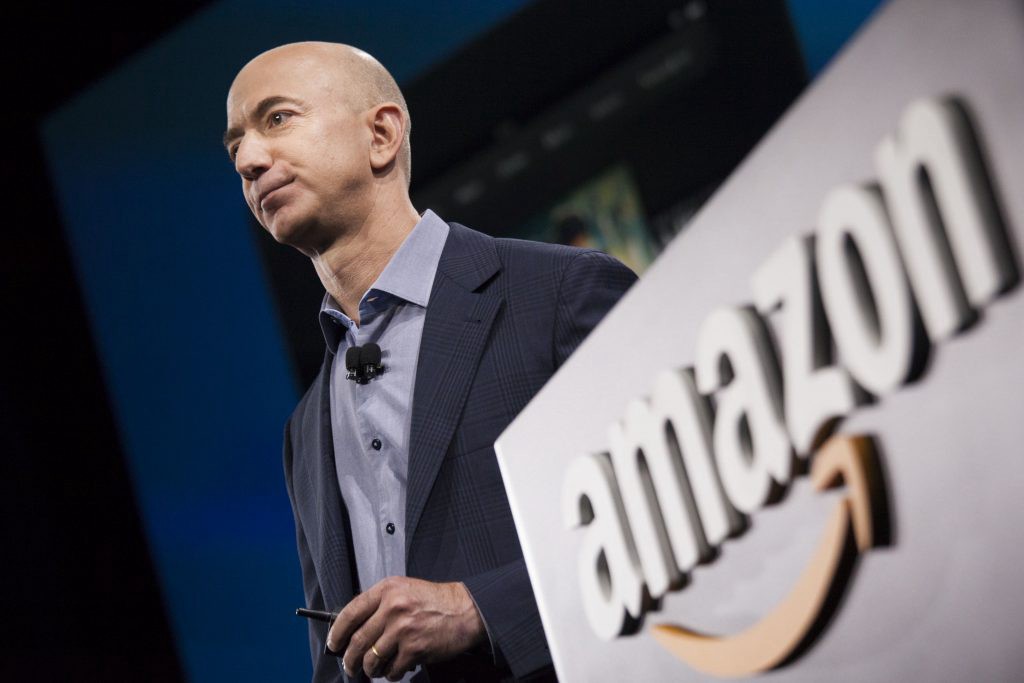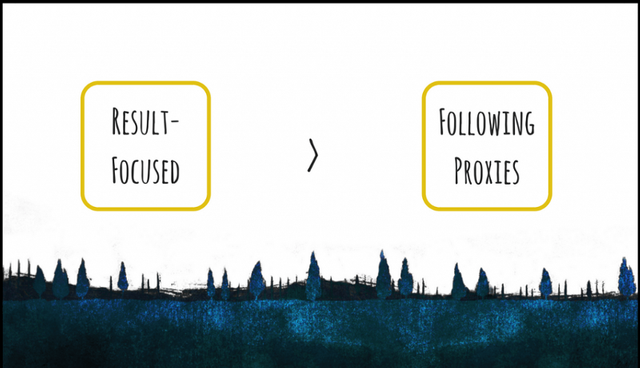I Didn’t Know Who My Baby’s Father Was

In the early 1990s, Jeff Bezos noticed something strange.
He was nearing 30, and it was at the dawn of the internet revolution. The web was nowhere near what it is today, but the thing that caught Bezos’ attention was that usage was picking up at a rate of 2,300% a year.
Not wanting to miss out, he quickly made a list of 20 possible products to sell online, and eventually settled on shipping books because of their low cost and universal demand.
Amazon may have had humble beginnings, but today, that bookstore is something far more. Since their day of incorporation in 1994, they have gone on to dominate not just retail, but other industries besides.
On the surface, a few things stand out about how Bezos approached the growth of his company. He maintained a true customer obsession from the start, he never got complacent in spite of their performance, and he sacrificed short-term vanity metrics for the endgame.
As we dig a little deeper, however, it’s clear that there are certain details in his execution that made the surface-level advantages possible. Every company wants to take that approach, but not all of them have the foundational decision-making framework in place to do so.
Amazon may be an enormous corporation, but their core tools are simple and quite usable. Here is what we can steal.
- Distinguish Between High and Low Impact
Every day, we make big and small decisions in response to what our environment dictates.
These decisions demand time and attention, and much of the stress many of us experience on a day to day basis is a result of this constant pressure on our often limited resources. And then because of this stress, we get forced and rushed into making less than optimal choices.
The problem is that we intuitively judge the importance of our decisions based not on impact, but on random timing. Even if something is relatively unimportant, and even if it can wait, we feel the need to attend to it because of the surrounding circumstances.
As Jeff Bezos explained to Amazon shareholders in his 2015 letter, there are two categories of decisions. Type 1 are the mission-critical, high-impact choices that influence the larger strategy, while Type 2 are the lower stakes choices that can easily be reversed if need be.
At Amazon, by distinguishing between impact, they leave all Type 2 decisions to the teams and individuals on the ground, while the people higher up focus on Type 1 decisions.
Given that most large companies have a very fuzzy distinction between the two, they fall into the trap of immediacy and their ability to direct resources to the truly important things suffers.
It’s a simple but effective system for choosing to leverage attention to where it’s best used, because even in our own lives, it’s easy to confuse what’s important with what’s present.
Most of your time should always be spent on Type 1 decisions. Type 2 decisions should either be delegated, or they should be batched together with other less critical choices for later. - Avoid Using Proxies as a Default
With more technology, there is more automation. With more data, there is more efficiency.
Companies like Amazon have access to a sheer amount of resources that can ease their load in a number of ways. They can deploy surveys and tests to collect a wealth of research and use all of that to build systems that automate many of the decisions they have to make.
There are times when this is quite effective, but as Bezos points out:
“Good process serves you so you can serve customers. But if you’re not watchful, the process can become the thing. This can happen very easily in large organizations. The process becomes the proxy for the result you want. You stop looking at outcomes and just make sure you’re doing the process right… The process is not the thing. It’s always worth asking, do we own the process or does the process own us?”

Companies have different kinds of proxies than we do as individuals. Many of the processes we set up to help us automate decisions come in the form of analogies. We take shortcuts based on either an average obtained from somewhere or through the stories of others.
The problem with this kind of decision-making is that it overlooks context. Granted, if you’re not learning from the wealth of knowledge we have available in this day and age, you will be left behind. That said, it’s important to cater the application of that knowledge situationally.
Given the number of variables at play in any setting, it can be dangerous to think that an average or an analogy will work for you the same way that it worked for someone else. Good decisions gain their advantage because they were made with an awareness of the details.
For most Type 2 decisions, proxies are helpful, but when it comes to the high-impact Type 1 decisions, it’s better to reason from ground up, taking into account each unique situation.
- Release Ideas at 70% and Then Iterate
For most decisions, after a certain point, information and time provide diminishing returns.
As a general rule of thumb, the longer you take on something, the less you have to gain from taking that time, and the more you have to lose from falling behind. This doesn’t apply to every situation, but generally speaking, improvements become redundant after a while.
For example, if you’re a creator or a maker of any kind, the creation is almost never going to feel perfect. Dwelling on the minor tweaks before sharing that work will eat up way more time than the yield of the potential improvements is worth. It’s far smarter to let go before you’re ready, and then iterate and improve based on the feedback.
Drawing these lines not only keeps us active, but it also ensures that we don’t get attached to our choices. Any high-impact decision concerns the future, and we should account for change. Trying to make static and perfect choices in a dynamic world is a recipe for disaster.
When we make choices, we think of them as individual events. It’s not at all accurate. Most choices have implications that extend over a period, and they need to be adjusted as such.
For Bezos and Amazon, the line is drawn at 70% of the perceived ideal information. After that, they focus on careful corrections. This benchmark allows them to move fast, but it also ensures that there’s no compromise on the quality of that decision with too early of a release.
This explains how they have been able to get into so many industries with such a strong foothold. Less time deciding means more decisions. Quantity eventually leads to quality.
Correcting the wrong is less costly than not taking action, and more often than not, correction of some sort is a necessity anyway. Draw a line and use feedback to improve.
All You Need to Know
Decisions shape every part of our life, and the quality of our decisions determine where we end up. Having decision frameworks can help us combat any potential blind spots.
Amazon is one of the most successful corporations of our day. They have many things going for them, but the key determinant of their success is arguably their decision-making process.
It’s easy to neglect the idea of having a framework in place to make choices. It’s something we have an intuitive process for, but it’s useful to remember that our intuition has known gaps.
Good decision-making not only removes those gaps, but it also filters signal from the noise.
Call to Action
The internet is filled with noise. I’ve created a free high-quality newsletter that helps people get 10x results and live better.
Congratulations @aliyeve! You have completed some achievement on Steemit and have been rewarded with new badge(s) :
Click on any badge to view your own Board of Honor on SteemitBoard.
For more information about SteemitBoard, click here
If you no longer want to receive notifications, reply to this comment with the word
STOPCongratulations @aliyeve! You have received a personal award!
Click on the badge to view your Board of Honor.
Do not miss the last post from @steemitboard:
Congratulations @aliyeve! You received a personal award!
You can view your badges on your Steem Board and compare to others on the Steem Ranking
Vote for @Steemitboard as a witness to get one more award and increased upvotes!